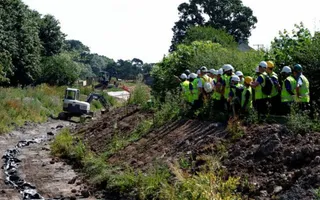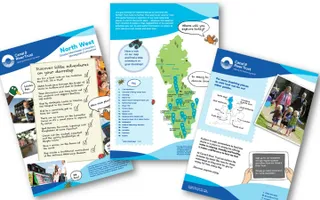Are the water management team usually hidden behind their desks in the office? Yes, quite often. But in July we had the chance to get our hands dirty and help out with the restoration of the Montgomery Canal.
As a technical support team day out, we had the opportunity to meet up with and work alongside colleagues from the restoration and infrastructure services teams who we don't get to see very often.
Together we helped to transport materials and clear vegetation. As well as protect the resident Great Crested Newt population by helping to construct fencing to separate them from the trucks delivering materials for the restoration.
Watch out for the newts
Great Crested Newts (Triturus cristatus) are a European protected species. The animals and their eggs, breeding sites and resting places are protected by law. While restoration activities take place in and near the canal it is important to minimise any potential harm or disturbance to these amphibia and their habitat.
You can find out more about these miniature dinosaurs on our newts webpage.
Background to the restoration
The canal was built in numerous stages and was initially used to supply limestone from Llanymynech. It extended from Frankton Junction, near Ellesmere, to Newtown 34 miles south. The canal declined with competition from the railways, and was abandoned in 1936, following a major breach close to the northern end.
The restoration of the canal dates back to 1969, when plans to build a link road on the Welshpool section led to an outcry from the locals. Since then, restoration has taken place in phases, with help from voluntary groups and local authorities, as well as the Canal & River Trust and predecessor, British Waterways.
If you would like to know more about the Montgomery Canal and its restoration, please follow these links to the Montgomery Canal page and Restoration page on our website.








